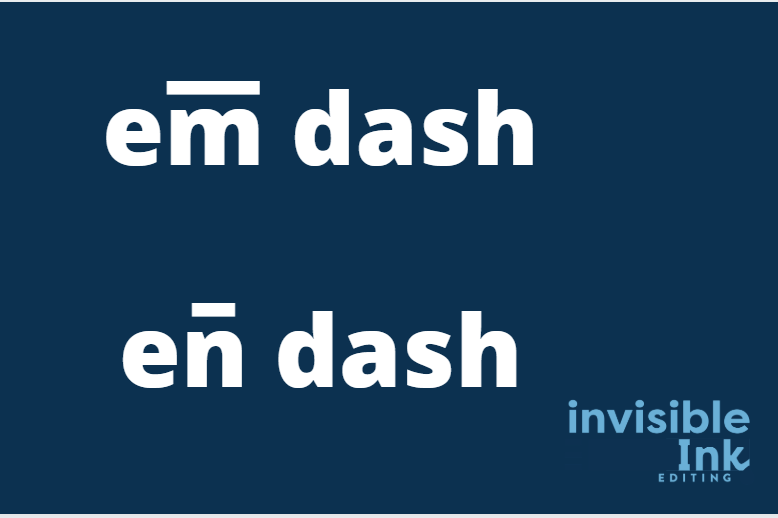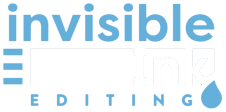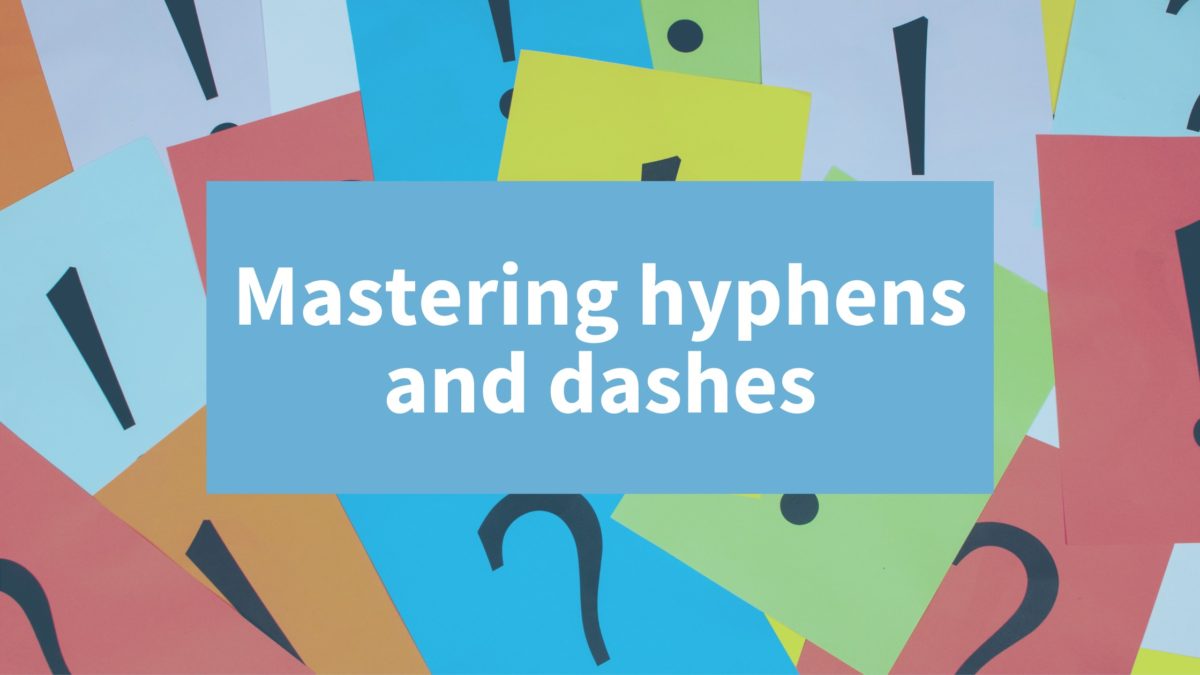Contrary to popular belief, hyphens and dashes are not interchangeable lines you can sprinkle over your manuscript like cracked pepper.
Hyphens (-), en dashes (–), and em dashes (—) are tools of your trade. Understanding their nuances will make you a better reader and writer.
Let’s take a closer look and break down exactly what each is used for.
Hyphens vs. dashes
So what’s the difference between hyphens and dashes?
Dashes are longer than hyphens, but more importantly, they serve different functions in a sentence.
The first thing you need to know is that there are two different types of dashes: em dashes (—) and en dashes (–). They also serve different functions, which is where things get a little confusing—but we’ll get into that later.
For now, you can remember this basic rule of thumb: Em dashes connect phrases, whereas hyphens connect words. More often than not, en dashes connect numbers (ex. 2001–2013).
(Fun fact: Do you know how em and en dashes got their names? Because they are, respectively, the width of an m and an n.)

How to type an em dash
On PC with numpad: Hold ALT and type 0151 on the numpad.
On Mac: Hold Option and Shift, then hit the hyphen key.
How to type an en dash
On PC: Hold ALT and type 0150 on the numpad.
On Mac: Hold Option and press the hyphen key.
Now that we’ve got the basics down, let’s go deeper into these different types of punctuation, with lots of examples.
Why are hyphens necessary?
Hyphens may be small, but they can have a big impact on sentence comprehension. Consider the difference between these two sentences:
Steve is a small-business owner. (Steve owns a small business.)
Steve is a small business owner. (Steve is a short guy who owns a business.)
In this instance, the hyphenated words (small-business) act together as an adjective, describing the noun that follows (owner)—what your editor would call a compound modifier or a compound adjective.
How to spot compound modifiers
Compound modifiers are notoriously difficult to identify, so let’s start with the basics.
As with the previous example, a hyphen strings together words that (a) act in unison to describe a single noun and (b) come before that noun in the sentence. Here are some examples:
The strange man had a six-inch-long nose.
The young girl looks fabulous with her rose-red hair.
Using hyphens incorrectly is an all-too-common mistake.
The eleven-year-old champagne was bubbly and refined.
We strive to give clients a three-week, error-free turnaround on edits.
The scary-looking dog was foaming at the mouth.
Simple, right? Well, we’re not done yet. This wouldn’t be an English grammar lesson without a slew of exceptions.
Exception No. 1: Watch out for coordinate adjectives
Don’t be tempted to hyphenate two separate adjectives describing the same noun, also known as coordinate adjectives:
The police chief is a tough, gruff woman.
Here, the police chief is tough, and she is also gruff. Each of these adjectives could be used individually to describe her, so there’s no need to hyphenate them.
But you would use hyphens if you wrote compound modifiers that serve as coordinate adjectives, like in the following example:
The police chief is a no-nonsense, mean-spirited woman.
Exception No. 2: Watch out for location in the sentence
Where words appear in a sentence matters. If a compound modifier comes before the noun it describes, then add a hyphen. If it comes after, then don’t hyphenate.
Dr. Jamison is a well-regarded physician.
In her field, Dr. Jamison is well regarded.
Exception No. 3: Don’t hyphenate adverbs (words that end in -ly)
Never hyphenate adverbs ending in -ly, even if the adverb-adjective compound comes before a noun. Why? Because the adverb is simply doing what it does best: enhancing an adjective. No need for special punctuation!
WRONG: Max is an incredibly-enthusiastic fan of chocolate.
RIGHT: Max is an incredibly enthusiastic fan of chocolate.
But there are instances where adverbs that don’t end in -ly would require hyphenation if used in a compound modifier. But even that really depends on the context. Since we’re getting in the grammar weeds again, here’s an illustrative example:
What is the worst-paid job? (What job pays the worst?)
What is the worst paid job? (What paid job is the worst?)
In the first example, worst is an adverb that enhances paid. Used together as a compound modifier, they describe job.
In the second example, worst is an adjective, and so is paid. Worst describes paid job, not only job. (Because paid carries more weight as an adjective than worst, they are not coordinate adjectives, which would require a comma.)
What are hanging hyphens?
Hanging hyphens occur when two compound modifiers, often connected with a conjunction such as and, share a common word. It’s called a hanging hyphen because you leave the hyphen hanging off the first compound modifier:
Do you have short- and long-term goals for your career?
Late seventeenth- or eighteenth-century literature can be enlightening.
Note the space that follows the hanging hyphen. It might feel wrong, but it is oh so right.
When to use em dashes
The em dash is the jack-of-all-trades of the punctuation family; it can stand in for many forms of punctuation.
So when should you use an em dash instead of these other forms of punctuation? That’s up to you and your editor. There’s no hard-and-fast rule here. It’s all about how your sentence feels in the moment, with or without the em dash.
1. Parentheses
In the examples below, the em dashes are serving the same function as the parentheses: to separate nonessential information from the rest of the sentence.
The best players on the basketball team (Rory, James, and Craig) happen to be the shortest players.
The best players on the basketball team—Rory, James, and Craig—happen to be the shortest players.
2. Commas
In a few choice instances, an em dash can mimic the brief pause made by a comma in a compound sentence. At the right moment, an em dash can even add a drop of suspense by elongating that pause:
Roberta saw the blood, but where was the knife?
Roberta saw the blood—but where was the knife?
Like parentheses, sometimes commas set aside nonessential phrases. (If you want to get extra nerdy about it, these are called nonrestrictive appositive phrases.)
Em dashes work with these as well.
Her Christmas sweater, a mishmash of green bows and jingle bells, was the hit of the holiday party.
Her Christmas sweater—a mishmash of green bows and jingle bells—was the hit of the holiday party.
3. Colons
A colon or an em dash can signal to a reader that clarifying information is to come:
He knew what he had to do: run away screaming.
He knew what he had to do—run away screaming.
4. Semicolons
Want to connect two independent clauses without joining them with a conjunction? Use a semicolon or an em dash:
Our dogs are well-behaved; they never bark or bite.
Our dogs are well-behaved—they never bark or bite.
Bonus: Interrupted or cut-off speech
Writers often use em dashes in dialogue to show a sudden interruption:
“Mom!” Gwen said, startled. “I was just—”
“Sneaking out of your bedroom in the dead of night?”
Warning: Do not use a hyphen to show stammering or trailing off. Use an ellipsis (. . .) instead.
“I . . . I . . . can’t remember,” he said.
“If you’re down here,” she said, “then that means . . .”
When to use en dashes
An en dash is not as flexible as its slightly longer sibling. It serves very specific purposes, often involving numbers instead of words:
1. Sports scores or votes
Writing the next great basketball novel or political thriller? Then familiarize yourself with the en dash:
The Gooberville Goats beat the Wickerburg Wombats 35–18.
Congress voted 297–138 to pass the bill.
2. Ranges
I bet you didn’t know how popular en dashes are in graveyards and churches. You can’t complete a tombstone or bible study without them.
Ella Fitzgerald (1917–1996) was a jazz singer like no other.
I have attended too many weddings that include a reading of 1 Corinthians 13:4–8.
3. In place of the word to
Amaze your friends and colleagues by knowing the exact kind of dash that can stand in for to:
The Boston–Chicago train leaves in an hour.
The years 2001–2007 were his most formative.
During Happy Hour at Milo’s Pub, 5:00 p.m.–6:00 p.m., buffalo wings are half price.
Warning: Do not use an en dash to replace the word to when the range in question is preceded by words like from or between. Just write out to.
WRONG: Bus service was suspended from 10:00 p.m.–6:00 a.m.
RIGHT: Bus service was suspended from 10:00 p.m. to 6:00 a.m.
4. Connecting a compound modifier with proper nouns
Remember compound modifiers? Remember how we said you connect them with hyphens? And remember when we said that English grammar is chock full of exceptions?
Well, here’s yet another. When you create a compound modifier with proper nouns, you use an en dash—but only between the final two words in the compound modifier. Why? When you find out, let us know.
WRONG: The Academy-Award-winning actor also happened to be a hell of a poker player.
WRONG: The Academy–Award–winning actor also happened to be a hell of a poker player.
RIGHT: The Academy Award–winning actor also happened to be a hell of a poker player.
Hyphen or dash? Ask an editor.
Believe it or not, this list isn’t complete. There are many more ways to use hyphens, en dashes, and em dashes—and even more exceptions! If you’re struggling with hyphens and dashes in your creative manuscript, reach out to Invisible Ink Editing. Our editors love to talk about the nuances of grammar and the ways to improve writing through perfect punctuation.

